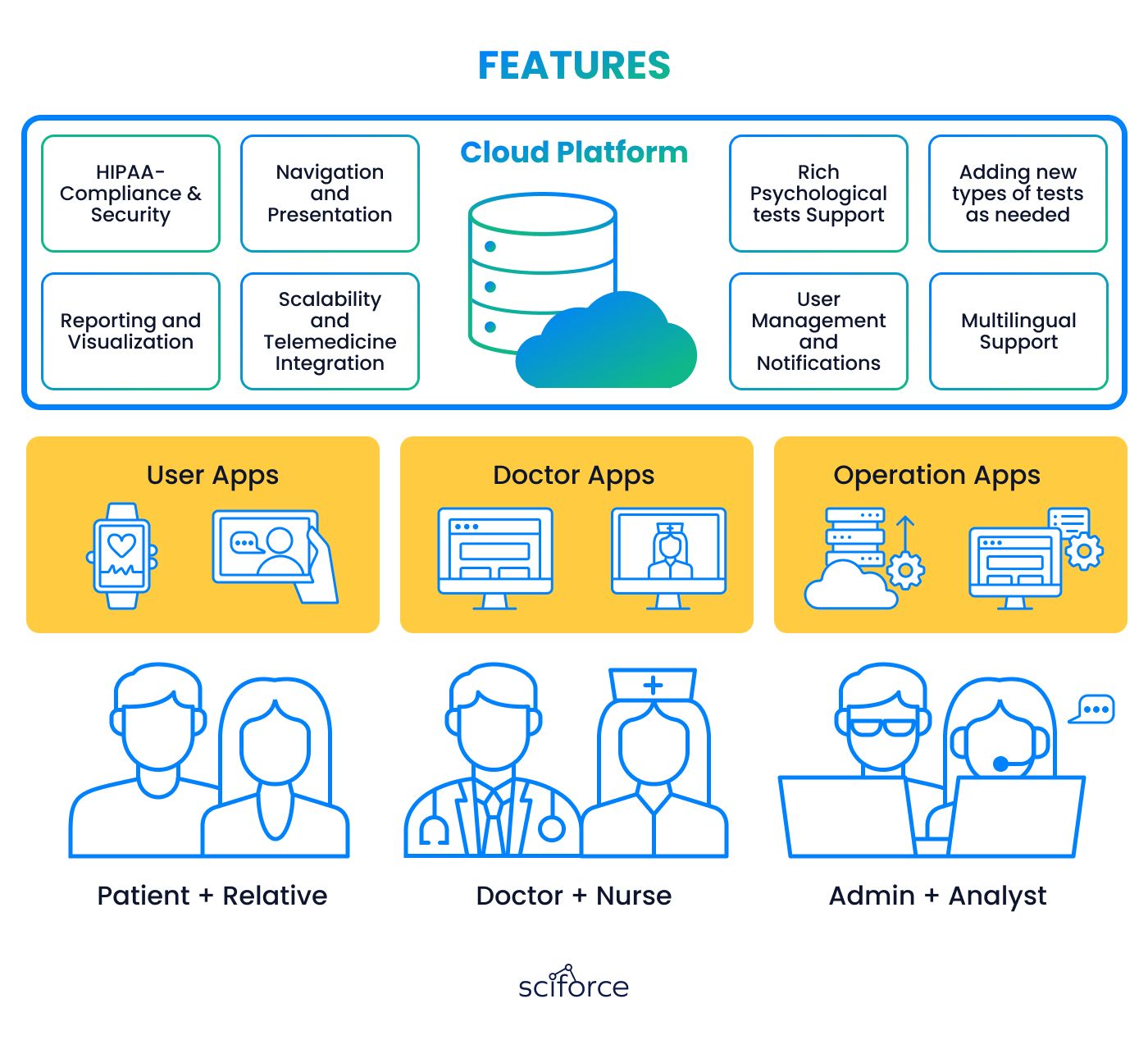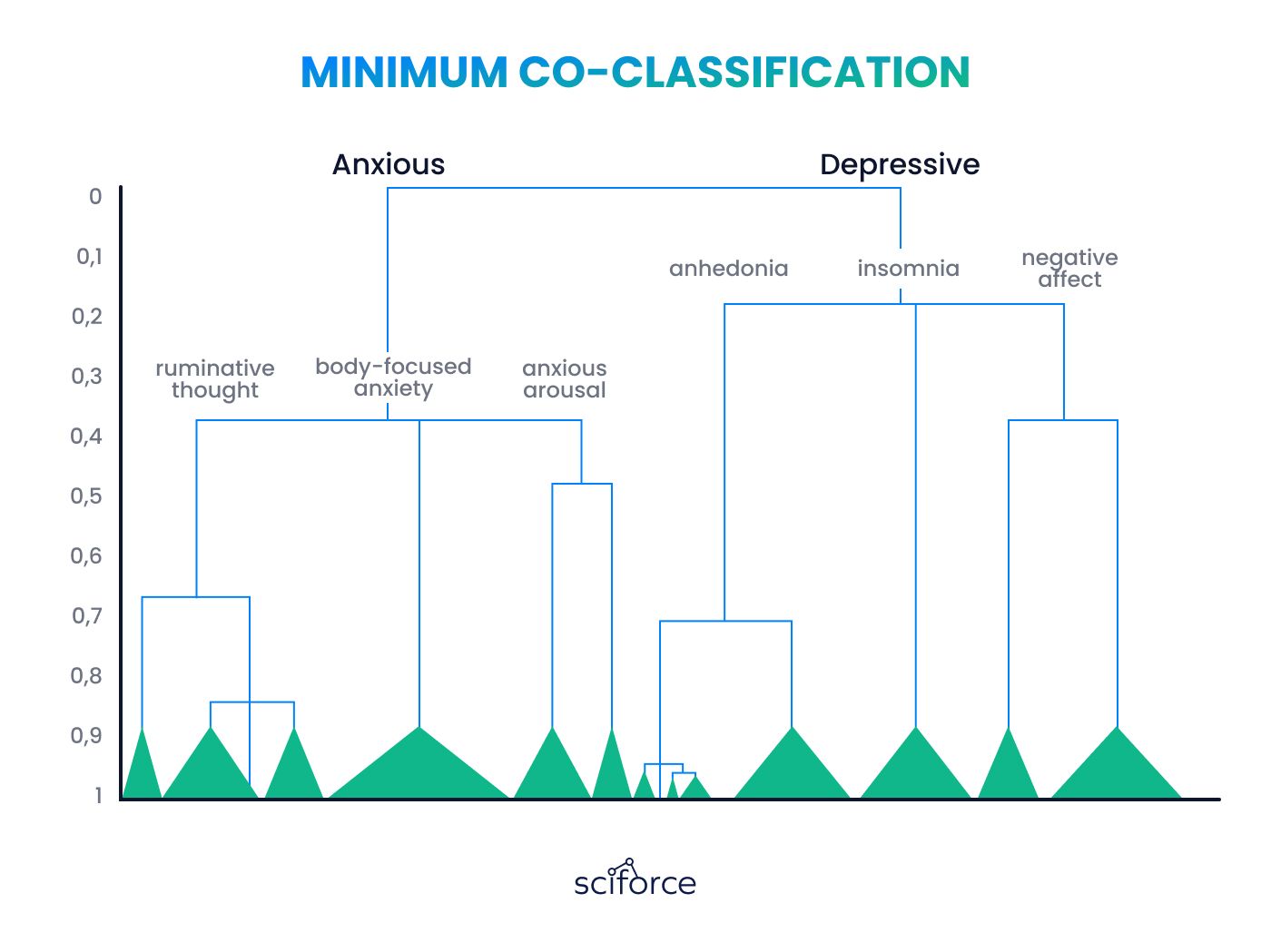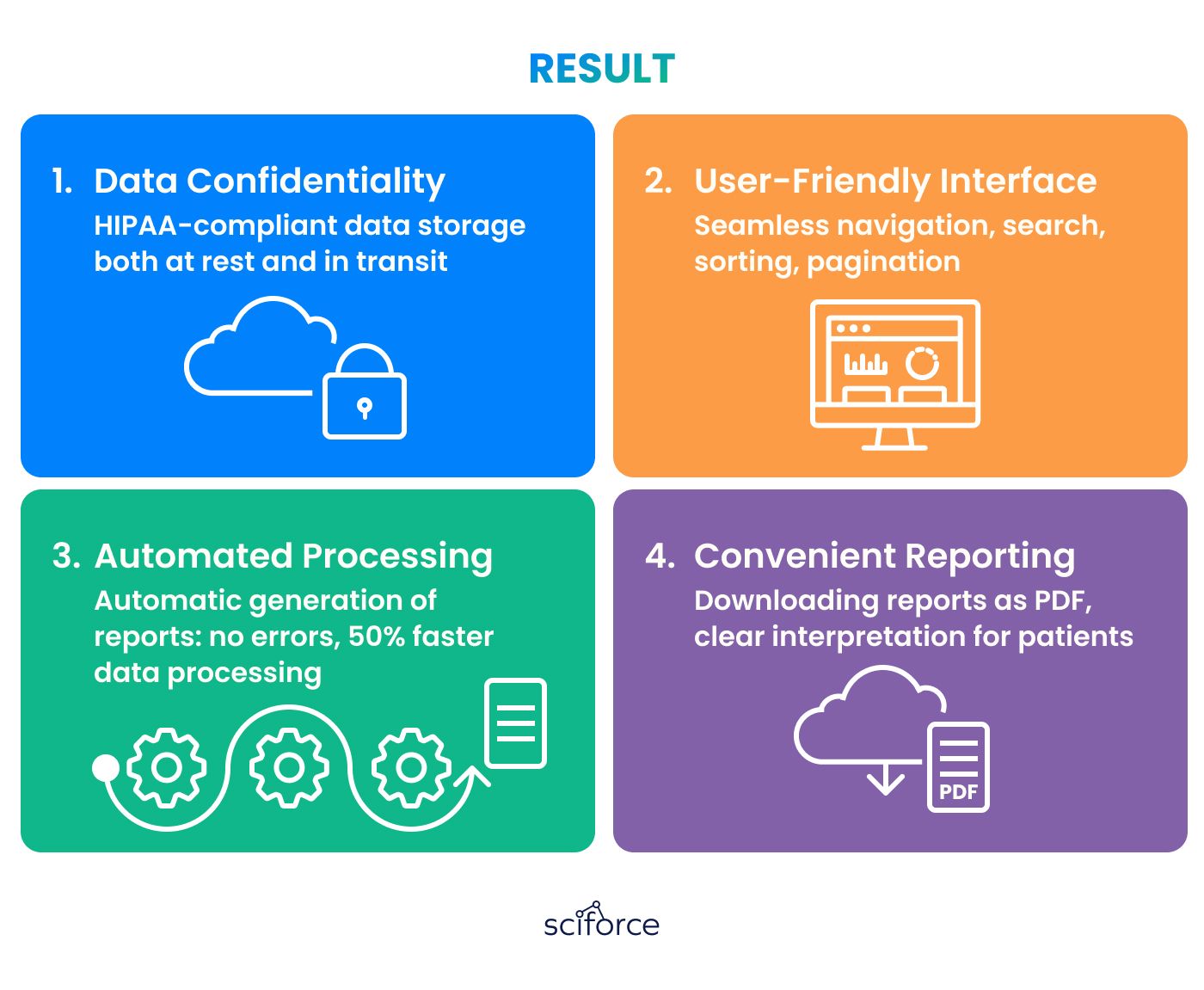Our client is a healthcare company, specializing in personalized neuropsychological testing and cognitive-behavioral therapy. Renowned for expert-driven assessments and practical therapies, they address complex mental health issues like ADHD, dyslexia, and autism.
The mental health industry requires clear, accessible, and timely communication of patient information. Accurate and understandable reporting on mental health status and treatment progress is essential.
The goal of this product is to simplify the presentation of mental health test results, making them accessible and understandable to all parties involved, including patients, their families, and healthcare providers.
Complexity of Reports
The interface's complexity makes it difficult for medical staff to navigate, slowing down their workflow and hinders interaction with patients.
Lack of Visualization
No convenient tools for visually displaying test results and treatment progress, difficulties for healthcare providers to track and for patients to understand mental health data effectively.
Communication Issues
Mental health reports are filled with jargon and complex data, making them hard for non-specialists to understand. This complexity creates challenges for healthcare providers in communicating essential information and confusion among patients and their families.
Manual Data Processing
Manual data processing and entry involve a high risk of errors and add a significant routine workload on doctors, leading to inaccuracies in patient records and delays in accessing critical information.
HIPAA Compliance & Security
Lack of security measures to protect patient’s confidential information, risking HIPAA compliance issues.
We developed a web application designed to make mental health reports clear and accessible. The app simplifies the reporting process, allowing healthcare providers to create, edit, and manage reports directly within the system. It features a user-friendly dashboard where all patient reports are displayed in an organized, paginated table, making it easy to search and sort through records.
For each patient, the application can generate up to five visualizations of test results, providing a visual summary that is easy for both patients and their families to understand. These visualizations help to illustrate treatment progress and the overall mental health status without overwhelming users with complex data.
Users can download these reports in PDF format for offline access or present them directly from the application in a dedicated presentation mode, which highlights key information and visualizations. This ensures that all stakeholders have a clear and concise understanding of the mental health status and treatment dynamics, improving communication and reducing misunderstandings.

1. HIPAA-compliant and Secure Platform
Securely hosts and stores data on HIPAA-compliant Amazon Web Services (AWS). It uses HTTPS certificates for secure network traffic, supports data backups with PostgreSQL, and includes detailed audit and event logs for thorough monitoring and data integrity.
2. Navigation and Presentation
Features an intuitive dashboard for easy navigation, with functionalities for report search and sorting. It includes a presentation mode for clear display of information and is accessible via a mobile version for on-the-go use.
3. Reporting and Visualization
Automatically generates visualizations and reports from patient test results and offers advanced analytics to track treatment progress. Additionally, it includes features for archiving old data to records organized and accessible.

4. Scalability and Telemedicine Integration
Efficiently scales to handle growing data and user demands. It integrates with Electronic Medical Records (EMR) for unified patient data management and connects with telemedicine platforms to support remote consultations.
5. Rich Psychological Tests Support
Enables healthcare providers to add new types of tests as needed. It supports a wide range of psychological tests, allowing for comprehensive and adaptable patient assessments.
6. User Management and Notifications
Includes robust user management features, allowing administrators to assign specific roles and access rights. It also provides notifications and reminders to ensure timely updates and actions.
7. Multilingual Support Supports multiple languages, including English, Spanish, and French.
User Roles & Permissions
1. Doctor
Conducts assessments, select and interpret tests, create and update treatment plans, add notes for patients and their families. Has full access to patient data, test results, treatment plans, and report generation.
2. Nurse
Assists in patient assessments, administer tests, input data, provide patient support. Has access to patient data, test administration, and support functions, but limited access to creating treatment plans and interpreting results.
3. Administrator
Manages user accounts, assign roles, ensure system security, oversee data integrity. Has full administrative access to all system settings, user management, and security features.
4. Analyst
Analyzes the test data, generates statistical reports, and provides insights on treatment effectiveness. Has access to aggregated data, test results, and analytical tools, but no direct access to individual patient records.
5. Patient
Completes assigned tests, view personal test results and reports, follow treatment plans. Has access to personal health data, test results, and treatment plans, but no access to other patients' information.
6. Family Member
Supports the patient, view test results and treatment plans as permitted by the patient. Has access to the patient's health data and treatment plans, as authorized by the patient.
1. Initial assessment
During the first consultation, the doctor collects the patient's medical history and adds this information to the system.
2. Test selection
Based on the initial assessment, the doctor selects the necessary psychological tests, with the system providing suggestions.
3. Conducting tests
The patient completes the selected tests. The system stores the results and visualizes them in a dashboard format.
4. Interpretation
The doctor evaluates the test results, interprets the findings, adds notes for the patient and their family, and creates a treatment plan.
5. Additional consultations
Further consultations with the patient and their family are conducted to present and discuss the report.
6. Treatment monitoring
Throughout the treatment, additional information is entered, further tests are conducted, updated reports are generated, and ongoing consultations are held.
7. Archiving
Upon completion of the treatment, the report is archived. This archived report can be easily retrieved if the patient returns for future consultations.
- Amazon Web Services (AWS)
Secure, HIPAA-compliant hosting for reliable data management.
- PostgreSQL
Robust database for storing and quickly accessing patient data.
- HTTPS Certificates
Ensures secure data transmission to protect patient confidentiality.
- Angular 7
Delivers a dynamic and user-friendly front-end experience.
- Django Rest Framework (DRF)
Provides a high-performance, flexible back-end to seamlessly connect with the front-end.
Data Confidentiality & HIPAA Compliance
The application is hosted on Amazon Web Services (AWS) to meet HIPAA standards for data security. It uses PostgreSQL for secure data storage and regular backups. To protect sensitive information, HTTPS certificates secure network traffic, and data encryption safeguards patient data both at rest and during the transfer.
Creating a User-Friendly Interface
We developed an intuitive dashboard that allows healthcare providers to search for patients by name, sort reports by date, and easily create, edit, and delete reports. To ensure seamless navigation and interface, we conducted extensive testing across all user groups.
Automating Data Processing & Visualization
Using advanced data processing and visualization libraries, the application automatically generates visualizations based on patient test data entered. Providers can customize the visualizations and add text descriptions before saving reports.
Viewing & Presentation of Reports
To ensure convenient viewing and presentation of reports, the application allows users to download reports in PDF format for offline access. Additionally, it offers a presentation mode where healthcare providers can display test results using detailed graphs and text descriptions
Scalability and Performance
For better scalability and performance, we used AWS for scalable hosting solutions. We optimized the PostgreSQL database and server-side components to efficiently handle growing data volumes. Additionally, we employed Angular 7 for the front-end and Django Rest Framework for the back-end to ensure robust performance and responsiveness.

The web application has greatly improved mental health treatment and reporting. It enhances data confidentiality, offers an easy-to-use interface, automated report generation, and ensures convenient reporting. Here is how the solution has influenced the work of our client:
- Improved Trust
Enhanced patient trust due to robust data protection and transparent communication, resulting in a 20% increase in patient retention rates.
- Increased Efficiency
Optimized workflows for medical staff, reducing administrative tasks by 30%, and allowing more time to be dedicated to direct patient care.
- Cost Reduction:
Reduced costs for data processing and infrastructure maintenance by 25% through the use of cloud solutions.
- Higher Satisfaction
Improved interactions with patients and their families through clear and understandable reports, leading to a 15% increase in overall patient satisfaction scores.
We've created a solution that improved mental health treatment and reporting, improving workflows for healthcare providers and enhancing the patient experience.